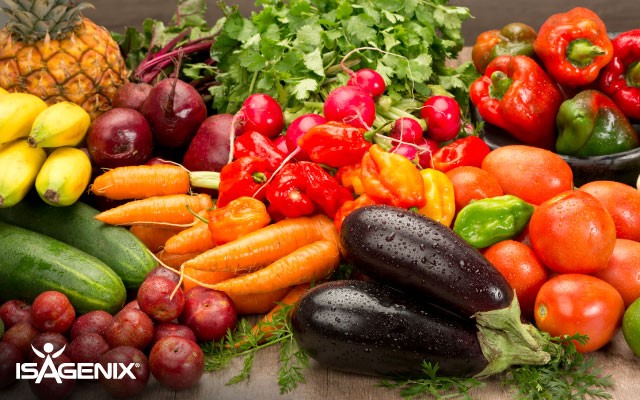High blood pressure has been called a silent killer since it has no obvious symptoms, but it can lead to serious health risks. Don’t let problems with blood pressure go undetected. Knowing your blood pressure numbers and understanding how to make better diet and lifestyle choices may help you keep blood pressure risks under control.
According to the American Heart Association, the first step in addressing blood pressure management is to “know your numbers” by having your doctor check your blood pressure regularly. High blood pressure is a serious concern, because it increases a person’s risk for heart disease, kidney problems, and stroke. It’s also very common, affecting almost one third of adults, worldwide (1).
High blood pressure means that the force of the blood flowing through your blood vessels is consistently too high. When blood pressure is too high, your heart has to work harder to keep blood pumping through your body. High blood pressure also causes strain on artery walls and can damage delicate blood vessels, like those in the eyes and kidneys. Some of the factors that increase your risk for developing high blood pressure can’t be changed, such as age and family history. But there are many factors that are under your control, such as your diet and lifestyle.
DASH for Health
One of the most effective ways you can take charge of your heart health is through diet and lifestyle choices. Dietary Approaches to Stop Hypertension, known as DASH for short, is a fruit- and vegetable-rich eating plan that is recommended for anyone who wants to maintain a healthy blood pressure. The DASH eating plan is supported by the American Heart Association, the Dietary Guidelines for Americans, and the Academy of Nutrition and Dietetics (2-4). This style of healthy eating is widely endorsed because the benefits of a DASH diet for supporting healthy blood pressure have been demonstrated through significant scientific research (5). The DASH diet isn’t a weight loss plan, although it might help with weight loss since it includes many filling foods that are rich in nutrients but low in calories.
What Does a DASH Plan Look Like?
The DASH eating plan is rich in fruits and vegetables and is moderate in meat, oil, and sweets. It’s a flexible eating plan that includes daily goals for different food groups and can be adjusted to meet a variety of calorie levels and health goals (6). This is an example DASH eating plan based on a 2,000-calorie diet:
- 2-2 ½ cups of fruit daily
- 2-2 ½ cups of vegetables daily
- 2-3 cups of low-fat dairy daily
- 6-8 ounces of whole grain daily
- 2-3 teaspoons of oils daily
- 4-5 servings of nuts, seeds, and legumes per week
- 6 ounces or less of lean meat, poultry, or fish daily
- 5 tablespoons or less of extra sugar and sweets each week
Can Isagenix Products Fit In a DASH Eating Plan?
If you want to follow a DASH eating plan, it’s easy to keep your favorite Isagenix products in the mix. A DASH eating plan is flexible and you have many choices in meeting the recommended daily goals for each food group. For example, one or two servings of IsaLean® Shake can easily fit as part of your 2-3 daily servings of dairy-based foods. Blending your favorite IsaLean Shake with ½ cup of fresh or frozen fruit is a delicious choice that can help you meet your recommended servings of fruit for the day.
The DASH plan is a model for healthy eating that is widely recommended to support healthy blood pressure. In any case, you should always work with your physician to decide what’s best for your personal situation. As a reminder, you ought to work with your doctor regardless to know your blood pressure numbers and then take charge with healthy diet and lifestyle choices.
References
- GBD 2013 Risk Factors Collaborators. . Global, regional, and national comparative risk assessment of 79 behavioural, environmental and occupational, and metabolic risk factors or clusters of risks in 188 countries, 1990–2013: a systematic analysis for the Global Burden of Disease Study 2013. Lancet. 2015;386:2287–2323
- Appel LJ, Brands MW, Daniels SR, Karanja N, Elmer PJ, Sacks FM. Dietary approaches to prevent and treat hypertension: a scientific statement from the American Heart Association. Hypertension. 2006 Feb; 47(2):296-308.
- Bernstein M, Munoz N; Academy of Nutrition and Dietetics. Position of the Academy of Nutrition and Dietetics: food and nutrition for older adults: promoting health and wellness. J Acad Nutr Diet. 2012 Aug;112(8):1255-77.
- U.S. Department of Health and Human Services and U.S. Department of Agriculture. 2015 – 2020 Dietary Guidelines for Americans. 8th Edition. December 2015. Available at http://health.gov/dietaryguidelines/2015/guidelines/.
- Siervo M, Lara J, Chowdhury S, Ashor A, Oggioni C, Mathers JC. Effects of the Dietary Approach to Stop Hypertension (DASH) diet on cardiovascular risk factors: a systematic review and meta-analysis. Br J Nutr. 2015;113:1-15.
- National Heart, Lung, and Blood Institute (2006) Your Guide to Lowering Your Blood Pressure with DASH. NIH Publication no. 06-4082. Bethesda, MD: NIH, National Heart, Lung, and Blood Institute.





